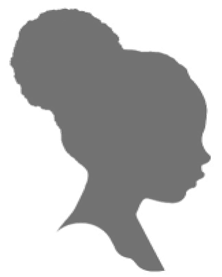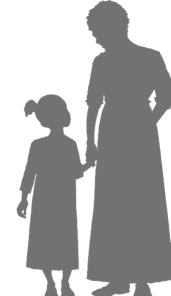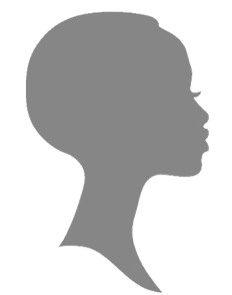
Every year, an estimated 1 billion children aged 2 to 17 experience physical, sexual, or emotional violence, or neglect. Ten percent of children are sexually abused (WHO, 2020)
The United Nations (UN) Convention on the Rights of the Child (CRC) in 1989 gave priority to the rights, agency, and power of children. The UN Sustainable Development Goal (SDG) 16.2 of 2016 promotes just, peaceful, and inclusive societies, to specifically end abuse, exploitation, trafficking, and all forms of violence against, and torture of, children.
Child sexual abuse is defined in South African law as any sexual act, or attempt to commit a sexual act, with a child, with or without the child’s consent. Sexual abuse includes sexually molesting or assaulting a child or allowing a child to be sexually molested or assaulted; encouraging, inducing, or forcing a child to be used for the sexual gratification of another person; using a child in or deliberately exposing a child to sexual activities or pornography; procuring or allowing a child to be procured for commercial sexual exploitation or in any way participating or assisting in the commercial sexual exploitation of a child.
Sexual abuse means any act constituting an offence against a child, any offense against a child under common law, in terms of the Criminal Law (Sexual Offences and Related Matters) Amendment Act (Act No. 32 of 2007) or the Children’s Act (Act No. 38 of 2005 as amended). Although a child is defined as a person under the age of 18 years old, the age of consent for both boys and girls is 16 years of age. There are some exceptions to the age of consent. For example, if both parties are between the ages of 12 and 16, or if a child between the ages of 12 and 16 has sex with someone who is less than two years older than they are, neither will be prosecuted. No child under the age of 12 can consent to sex, and therefore, sex with a child younger than 12 years old is rape or sexual assault.
The prevention of sexual abuse of children and the protection of children from sexual abuse are inadequate
Around the globe, child sexual abuse prevention efforts include mostly interventions directed at people who are not abusive (e.g., public awareness campaigns), and interventions directed at people who have already been convicted of the crime, to reduce or eliminate their abusive behaviour. However, early detection in people without criminal convictions, and preventing future abusive behaviour once someone with a criminal conviction has completed their punishment, are lacking (McCartan, Uzieblo, & Smid, 2020), rendering prevention ineffective.
In South Africa, the prevention of inter-personal violence, including sexual abuse, is hampered by disagreement about what constitutes violence prevention. A lack of knowledge about existing violence prevention interventions and programmes, and a lack of agreement on what interventions should be prioritised further restrain prevention efforts. The demand for healing is great, including amongst those who are tasked with prevention, and resource allocation is inadequate, unequal, and inappropriate. Even when an intervention works, the skills to up-scale are lacking (ISS, 2019). Despite the extent and magnitude of violence against children in South Africa, political and financial investments to prevent violence against children remain low (Hsiao, Fry, Ward, Ganz, Casey, Zheng & Fang, 2018).


One in three children in South Africa have experienced some form of sexual abuse before turning 18
Child sexual abuse can happen anywhere: in the child’s home, in the home of a family member or friend, in care institutions like hospitals and shelters, on the streets, at school, online, in community settings, in public spaces. In South Africa it happens most especially in contexts of trust and dependency, such as schools, and boys and girls are equally vulnerable to sexual abuse, although the form of sexual abuse is different for boys and girls. About 43% of sexual crimes against children are committed by other children, and children who have experienced sexual violence are also likely to have experienced other forms of violence (Ward, Artz, Leoschut, Kassanjee, & Burton, 2018).
There are approximately 22 million children under the age of 18 in South Africa. From April 2018 to March 2019, 24,387 sexual offences against children were reported by the South African Police Service. Most of these were rapes (76%) followed by sexual assault (18%), attempted rape (2%) and contact sexual offences (3%). Between April 2019 and March 2020, slightly more than 621,000 contact crimes were reported by the South African police, including just over 53,000 sexual offenses, of which 24,000 sexual offenses were against children. The sexual abuse of many of these children, like many before them and many still to come, will go untreated, or inadequately treated. The sexual abuse of many other children has and will go undetected, undisclosed, unnoticed.
A child who is sexually abused could experience worry, fear, anxiety, shyness, emotional disintegration, and diminished self-esteem. They may withdraw from family relationships and friendships, and feel ashamed or guilty. Several atypical behaviours can manifest, including attention deficit/hyperactivity disorder, conduct disorder, oppositional defiant disorder, intermittent explosive disorder, sexualised behaviour, or inappropriate sexual knowledge for the child’s age, and posttraumatic stress symptoms (without a specific known event) (LaTreill, 2020; Peker, Cengiz, & Çelik, 2020; Rosen, 2020; Ward, Artz, Leoschut, Kassanjee, & Burton, 2018).
By the time they reach adolescence, they could, in addition, struggle to manage conflict, and be prone to anger and targeted aggression or outbursts, antisocial acts, defiance, tantrums, destruction of property, theft, depression, personality disorder or dissociation, obsessive compulsive behaviour, somatic complaints or preoccupation, substance abuse or addiction, self-injurious behaviours or suicide attempts, and risky sexual behaviours (LaTreill, 2020; Peker, Cengiz, & Çelik, 2020; Rosen, 2020; Ward, Artz, Leoschut, Kassanjee, & Burton, 2018).
Peker, Cengiz and Çelik (2020) identified two factors that exacerbate the adverse long term health effects of sexual abuse: acts of child sexual abuse can be hidden and, therefore, continue for years, and signs and symptoms of sexual abuse may not be recognised by the people close to the abused child.
Despite the extensive body of knowledge, sexual abuse of a child can go unnoticed
Various factors can result in signs and symptoms going unnoticed (Salmona, 2018; LaTreill, 2020):
- Amongst children who experience abuse, the signs of sexual abuse vary.
- Several signs are not exclusively linked to sexual abuse, and some behaviours are not atypical for certain developmental phases of children and adolescents.
- Because of trauma amnesia amongst children who are sexually abused children may themselves not recall the abuse.
- If similar behaviours existed prior to the abuse, there will be no apparent behaviour change.
- The process by which the perpetrator of sexual abuse grooms a child creates a seemingly positive relationship, and the child may also believe that their abuser has their best interest at heart.
- Other adults in the child’s life may themselves have maladaptive coping styles or defence mechanisms that lead to denial.
- Socio-economic factors can play a role, including household income, social status, education, financial security, access to healthcare, psychoeducation, and childcare, etc.


Even when sexual abuse is discovered and/or disclosed, it is often not reported
The disclosure and reporting of sexual abuse is complex. In South Africa, prevalence and disclosure of sexual abuse is influenced by the level of anonymity that can be assured, the sex of the child, and whether the child lives in a rural or urban area (Burton, Ward, Artz, & Leoschut, 2015). It is estimated that only one in every nine cases of sexual abuse is reported.
When a child discloses sexual abuse, the parents’ response is also critical and important for what happens after the trauma, and for trauma resolution (La Treill, 2020). Exacerbating the poor likelihood of discovery and disclosure in South Africa is the fact that 36,000 households of about 55,000 children are headed by children (Statistics South Africa, 2020).
The overall conviction rate in South Africa is around 8% of reported crimes, and restorative justice is non-existent
Sexual violence reporting and conviction rates vary widely between and within countries, depending on the size, culture, and economic status of the country (McCartan, Uzieblo, & Smid, 2020). Despite the presence of Children’s’ Courts within the Criminal Justice System at Magistrate level in South Africa, reporting and conviction rates remain low.
An analysis of reported rape cases from 2012 revealed that out of 3,952 cases sampled, only 57% (n = 2,283) resulted in an arrest, while 65% of cases (n = 2,579) were referred for prosecution. Prosecutors accepted 34.4% of cases (n = 1,362) and these were enrolled for trial. In 18.5% of cases (n = 731) trials went ahead. A guilty verdict for a sexual offence was obtained in only 8.6% of cases (n = 340). Several factors played a role in case attrition (Machisa et al., 2017):
- Police officers choose not to open a case if they are not convinced of the reliability of the complainant’s statement.
- Suspects may remain unidentified, or it could be difficult to locate and arrest them.
- The survivor becomes untraceable or disinterested in pursuing the case.
- Prosecutors decline to prosecute, for example, when the evidence collected is not strong enough
- Prosecutor may withdraw a case, for example, if a complainant is not cooperative, or a perpetrator disappears.
- The case is discharged by the court, for example, where a prima facie case is not established.
In the few instances where a conviction is secured, correctional rehabilitation has been found wanting in several studies across South Africa, due to, for example, overcrowding, influx of drugs, poor living conditions and rape (Kheswa & Lobi, 2014), inadequate provision of financial and human resources and the necessary training, inappropriate staff role allocation, not identifying and addressing factors that lead to crime (du Plessis & Lombard, 2018), and failure to implement rehabilitation programmes (Murhula & Singh, 2020).
Making things right means responding to and repairing the harm caused by criminal behaviour, for victims, offenders, and the community. Restorative justice seeks a just response that addresses both the harm caused and the wrongdoing (Centre for Justice and Reconciliation, 2021) and the process can be transformative (Sherman & Strang, 2007):
- Repeat offending is reduced for some offenders.
- Offences brought to justice are increased, and the costs of retributive, criminal justice is reduced.
- Both victims and offenders feel that justice had been done more so than through criminal justice.
- Crime victims are empowered through the process, and their post-traumatic stress symptoms and the related costs are reduced.
- Crime victims are less inclined to feel the need for retribution against their offenders.
Restorative justice requires that the people most affected by the crime participate in its resolution. All parties are included, victims and offenders encounter each other, and amends for the harm are made. Finally, the parties are reintegrated into their communities. In South Africa, restorative justice is implemented in the form of collectively identifying harms, needs and obligations through accepting responsibilities, making restitution, and taking measures to prevent a recurrence of the incident and promoting reconciliation (Department of Justice and Constitutional Development, 2011). However, in the case of childhood sexual abuse, survivors may be unwilling to participate in encounters with perpetrators, and perpetrators may never admit guilt. Restorative justice in childhood sexual abuse cases is complex, and sometimes impossible, and effectively non-existent in South Africa, given the circumstances described here.


Recovery and treatment services and facilities are under-resourced, ineffective, non-existent, and can even be harmful
Designated health facilities in South Africa are mandated and required to provide medical and clinical forensic medical services for survivors of sexual violence, as specified in National Health Act (2003) Regulations. However, in a 2017 study this was found not to be the case (Doctors Without Borders, 2017):
- Nearly three quarters of designated facilities (73%) were not providing all the essential services.
- Most of the designated facilities were hospital-based and more than half of these facilities did not have a dedicated space for the care of survivors.
- Some of the designated facilities (7%) were referring survivors of sexual abuse elsewhere, because they did not have the capacity to offer any services.
- A fifth of facilities did not provide clinical forensic assessments for survivors of sexual violence.
- More than half of facilities offered clinical forensic assessments only from doctors, even though almost 805 of facilities had nurses available to see patients.
- Of facilities reporting to offer services, not even a third had a psychologist and only 70% reported that there was a social worker available to survivors.
The designated health facilities are the frontline for assisting survivors of sexual violence. Because of inadequate, or a lack of, comprehensive care, infrastructure, services, evidence for courts, human resources, counselling, and social work assistance, many childhood sexual abuse survivors cannot access what they need to put them on the road to recovery, and the support itself can become harmful for recovery.
Mental healthcare is available to less than 8% of (uninsured) South Africans who need inpatient and outpatient care, and readmissions within three months make up almost a quarter of the national expenditure on mental health (Docrat, Besada, Cleary, Daviaud, & Lund, 2019).
When the sexual abuse of a child is reported, the child is plunged into the often-frightening, and mostly ineffective prosecution processes within the Criminal Justice System. Although the courts have improved the process of child testimony regarding sexual abuse by introducing, for example, testifying in camera and using intermediaries, secondary traumatisation remains prevalent due to poor preparation, the sexual content, memory and recall issues, cross-examination techniques (e.g., discrediting the child witness), insufficient pre-testimony contact with the prosecutor, language barriers, and the impact of waiting periods, postponements, and delays. Child witnesses experience fear, anxiety, and guilt, and feel responsible, unprotected, and betrayed. The very nature of court processes is traumatic for a child, irrespective of the content of the case (Claasen & Spies, 2015; Parker, 2006).
Sexual abuse is a public health issue that affects all levels of society, occurs internationally, and has a multitude of impacts on the individual, community, and society (McCartan, Uzieblo, & Smid, 2020)
Some of the effects of childhood sexual abuse or abuse involving threats and violence include Posttraumatic Stress Disorder, painful sexual intercourse, externalising and internalising behaviours and symptoms, moments of dissociation, non-suicidal self-injury, sexual dysfunction, sexual avoidance, sexual compulsion, depression, eating disorders, obesity, relationship problems, disruptions in their attachment security and attachment difficulties (e.g. fearfully/ anxiously attached to individuals with or without sexual disturbances), substance abuse, and antisocial behaviours and traits that can impact survivors into adulthood and extend throughout a lifespan (Rosen, 2020).
A costing study investigating the social burden and economic impact of violence against children in South Africa found notable reductions to mental and physical health outcomes in the population if violence, neglect and witnessing family violence were prevented (Hsiao, Fry, Ward, Ganz, Casey, Zheng & Fang, 2018). The study estimated that the cost of inaction in 2015 amounted to nearly 5% of South Africa’s gross domestic product. The results showed that:
- drug abuse in the entire population could be reduced by up to 14% if sexual violence against children could be prevented,
- self-harm could be reduced by 23% in the population if children did not experience physical violence,
- anxiety could be reduced by 10% if children were not emotionally abused,
- alcohol abuse could be reduced by 14% in women if they did not experience neglect as children, and
- interpersonal violence in the population could be reduced by 16% if children did not witness family violence.

Bibliography
Burton, P., Ward, C.L., Artz, L. & Leoschut, L. (2015). The Optimus Study on Child Abuse, Violence and Neglect in South Africa. Centre for Justice and Crime Prevention, Cape Town, South Africa. http://webcms.uct.ac.za/sites/default/files/image_tool/images/242/PDFs/OptimusStudyshort.pdf
Centre for Justice and Reconciliation (2021). Restorative Justice. Washington DC, United Sates of America. http://restorativejustice.org/restorative-justice/
Claasen, L. T., & Spies, G. M. (2015). The Voice of The Child: Experiences of Children, In Middle Childhood, Regarding Children’s Court Procedures. Social Work/Maatskaplike Werk, 51(1), University of Stellenbosch, South Africa. http://socialwork.journals.ac.za/pub
Department of Justice and Constitutional Development (2011). Restorative Justice – The Road to Healing. Pretoria, South Africa. https://www.justice.gov.za/rj/2011rj-booklet-a5-eng.pdf
Docrat, S., Besada, D., Cleary, S., Daviaud, E., and Lund, C. (2019). Mental Health System Costs, Resources and Constraints in South Africa: A National Survey. Health Policy and Planning, 34(9). London School of Hygiene and Tropical Medicine, Oxford University Press, Oxford, United Kingdom. https://doi.org/10.1093/heapol/czz085
Doctors Without Borders (2017). Critical Gaps in Medical and Clinical Forensic Care for Survivors of Sexual Violence in South Africa. https://www.msf.org.za/news-and-resources/publications/untreated-violence-0
Hsiao, C., Fry D., Ward, C.L., Ganz, G., Casey, T., Zheng, X., & Fang, X. (2018). Violence Against Children in South Africa: The Cost of Inaction to Society and The Economy, BMJ Global Health, 3(1). https://gh.bmj.com/content/3/1/e000573
Institute for Security Studies (ISS) (2019). Policy Brief: What Will It Take to Prevent Interpersonal Violence in South Africa? South African Dialogue Forum. http://www.svri.org/documents/south-africa
Kheswa J. G., & Lobi, T. (2014). An Investigation of Effectiveness of Rehabilitation in the Correctional Centre, Eastern Cape. A Phenomenological Study. Mediterranean Journal of Social Sciences 5(14). https://www.researchgate.net/publication/272708837
LaTreill, J. (2020) Bridging the Gap: Understanding Non-offending Parental Responses to Their Children’s Sexual Abuse. Doctor of Clinical Psychology Dissertation, National Louis University, Chicago, Illinois, USA. https://digitalcommons.nl.edu/diss/490/
Machisa, M, Jina, R., Labuschagne, G., Vetten, L., Loots, L., Swemmer, S., Meyersfeld, B., & Jewkes, R. (2017). Rape Justice in South Africa: A Retrospective Study of the Investigation, Prosecution and Adjudication of Reported Rape Cases from 2012. Gender and Health Research Unit, South African Medical Research Council, Pretoria, South Africa. https://www.samrc.ac.za/sites/default/files/files/2017-10-30/RAPSSAreport.pdf
McCartan, K., Uzieblo, K. and Smid, W. J. (2020). Professionals’ Understandings of and Attitudes to the Prevention of Sexual Abuse: An International Exploratory Study. International Journal of Offender Therapy and Comparative Criminology. https://doi.org/10.1177/0306624X20919706
Murhula, P. B. B., & Singh, S. B. (2020). An Empirical Assessment of the Effectiveness of Offenders’ Rehabilitation Approach in South Africa: A Case Study of the Westville Correctional Centre in KwaZulu-Natal. The Oriental Anthropologist, 20(2). https://journals.sagepub.com/doi/abs/10.1177/0972558X20952972
Pan, Y., Lin, X., Liu, J., Zhang, S., Zeng, X., Chen, F., & Wu, J. (2020). Prevalence of Childhood Sexual Abuse Among Women Using the Childhood Trauma Questionnaire: A Worldwide Meta-Analysis. Trauma, Violence, & Abuse. https://doi.org/10.1177/1524838020912867
Parker, N. (2006). The Court Experiences of Survivors of Child Sexual Abuse. Mini-Thesis submitted in partial fulfilment for the degree M. Psych in the Department of Psychology, University of Western Cape, South Africa. https://etd.uwc.ac.za
Peker, A., Cengiz, S., & Çelik, A. (2020). The Effect of Psycho-Education Program Developed for Sexual Abuse on Counseling Teachers’ Reporting Sexual Abuse and Information and Risk Recognition Attitudes. International Journal of Education and Literacy Studies, 8(4), 74-86. http://dx.doi.org/10.7575/aiac.ijels.v.8n.4p.74
Rosen, K. (2020). The Impact of Childhood Sexual Abuse on Adult Sibling Relationships. Master of Counseling Project, City University of Seattle, Calgary, Canada. http://repository.cityu.edu/handle/20.500.11803/974
Salmona, M. (2018). Traumatic Amnesia. Mémoire Traumatique et Victimologie Association. https://www.memoiretraumatique.org/publications-et-outils/articles-de-la-dre-muriel-salmona.html
Sherman, L. W., & Strang, H. (2007). Restorative Justice: The Evidence. The Smith Institute, London, United Kingdom. https://www.iirp.edu/pdf/RJ_full_report.pdf
Statistics South Africa (2020). Marginalised Groups Indicator Report, 2019 (Report no. 03-19-05). Pretoria, South Africa. http://www.statssa.gov.za/publications/03-19-05/03-19-052019.pdf
World Health Organisation (WHO) (2020). Violence Against Children. https://www.who.int/news-room/fact-sheets/detail/violence-against-children
World Health Organisation (WHO) (2020). Global Status Report on Preventing Violence Against Children. https://www.who.int/teams/social-determinants-of-health/violence-prevention/global-status-report-on-violence-against-children-2020
Ward, C.L., Artz, L., Leoschut, L., Kassanjee, R., & Burton, P. (2018). Sexual violence against children in South Africa: a nationally representative cross-sectional study of prevalence and correlates. Lancet Global Health 2018, 6(4), 460-468. https://doi.org/10.1016/S2214-109X(18)30060-3
